Why settle for the real thing when you can get the miniature version? Herein lies the appeal of puppies, tiny electronic items and bonsai trees.
The art of bonsai traces its origins back to Tang dynasty China, where penjing (盆景), literally "tray landscape," developed from an imperial delight to a popular art form. According to legend, the idea of miniature trees goes back even further to a Han emperor who had a miniature version of his empire, complete with mini trees, created in his courtyard so that he could gaze over his "domain" from his window.
Miniature trees found their way to Japan, where they became "bonsai" ("tray-planted"), during the large-scale Chinese culture importation of the Heian period (794 AD to 1191). Long reserved for the elite, bonsai didn't gain mass popularity until the 14th century.
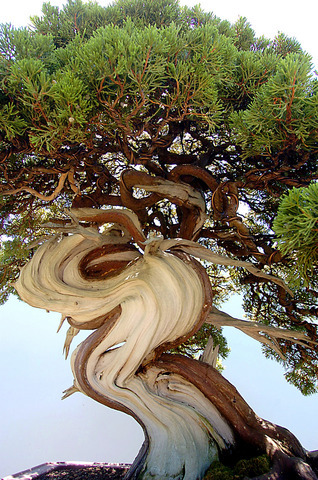
PHOTOS: LO PEI-DER, TAIPEI TIMES
As early as the 16th century, traders and missionaries brought bonsai from Japan and China back to Europe. By the late 1800s, two Japanese nurseries had set up shop in New York. Soldiers returning from Japan after World War II with bonsai trees fueled the growing popularity, and many Western nurseries began to grow bonsai. Today, prize-winning bonsai are cultivated from Thailand to Puerto Rico, England and the US.
In Taiwan, bonsai culture began in the late Qing dynasty. Taiwan's oldest living bonsai is a 240-year-old banyan that resides in Tainan's Kaiyuan Monastery (
"If you count bonsai growers registered with an association, there are between 10,000 and 20,000. For unregistered growers, the number is more like 100,000," said Yen Zi-jing (顏子景), who owns Bonsai World in Beitou (北投).
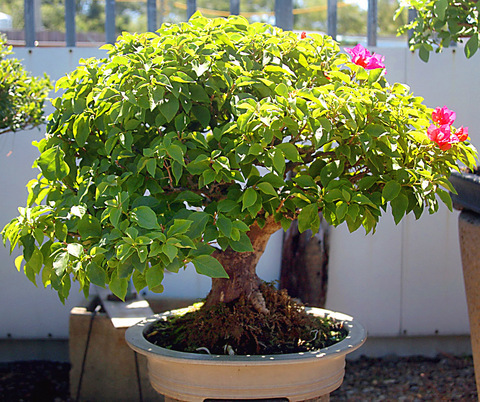
Bonsai growers in Taiwan are luckier than most: they have the climate on their side. The subtropical temperatures allow the trees to grow faster for longer. According to Yen, that means a fully developed tree can be produced in Taiwan in half the time it takes in Japan, where the climate is temperate.
Meanwhile, Taiwan's mountains mimic temperate and even frigid climates, providing for a broad range of tree species. These factors combine to make Taiwan's bonsai second only to Japan, said Yen.
Depending on its target size, a bonsai begins as a cutting or a seedling. Over the course of about five years it is pruned periodically to develop tapered trunks and branches. Young seedlings will naturally keep an even thickness for several meters. With bonsai, the trunk is chopped off at progressively higher points, causing it to grow thinner and thinner towards the top, creating the gnarled, tapered look of an old tree. The same is done to the branches.
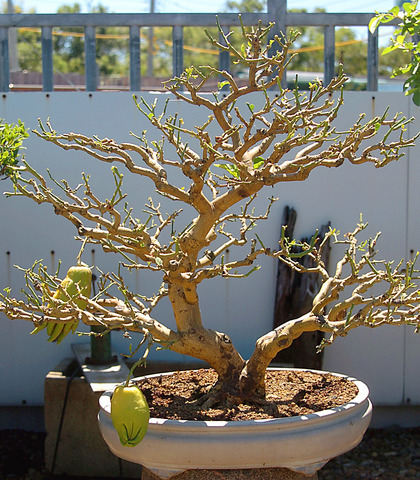
The most basic principle of bonsai is that every part of the miniature tree -- roots, trunk, branches and leaves -- should be in proportion.
Not all species of tree are suitable for bonsai cultivation. The tree has to have naturally small leaves or be able to
develop them, and the space between leaves must be minimal. This can also be done with careful pruning -- the less space between leaves, the smaller they will grow.
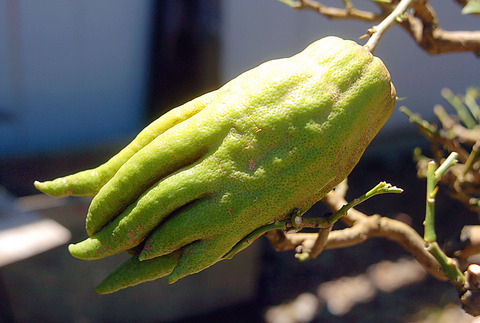
Trees that are popular in Taiwan include tamarind, Chinese parasol trees, common jasmine orange, Formosa firethorn, maple, Chinese hackberry and even guava, but the most widely grown is the banyan.
"Taiwan's banyan bonsai are the best in the world," Yen said. "But as for exports, the cypress is our top tree." Evergreens are especially valued in the bonsai tradition due to their sturdiness. Cypress, which grows with a bent trunk in nature, is consi-dered the most beautiful tree to grow as a bonsai.
"One of the important issues for bonsai creation is how to catch the specific characteristic and spirit of each species. Cypress is grown at high altitudes ... Affected by the violent geography and climate, it always develops a flexible trunk and branches ... Tender but tough, cypress fully reveals the value of life and accommodation in adverse circumstances," writes Yunlin (
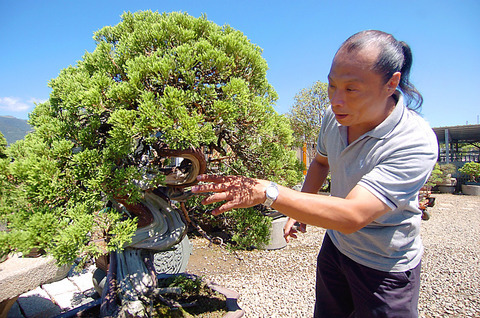
According to Yen most of the value of a bonsai depends on its age and how well it imitates nature. Yet to the trained eye, a beautiful bonsai is one that goes beyond simple realism to convey a deeper, indescribable aesthetic.
Yen, who offers classes in the art of bonsai, emphasized the importance of learning how to appreciate that aesthetic before spending a large sum on a banyan tree. The trees in his nursery -- mostly large bonsai that are 40 to 50 years old -- cost from NT$150,000 to NT$3,000,000. For those with a tighter budget and a less discerning eye, a smaller, younger bonsai from the Jianguo Weekend Flower Market (
Bonsai World is at 235, Chengde Rd, Sec. 5, Beitou, Taipei.
The Web site is www.bonsai.org.tw/aiabonsai/
The phone number is (02) 2828 8022.

On April 26, The Lancet published a letter from two doctors at Taichung-based China Medical University Hospital (CMUH) warning that “Taiwan’s Health Care System is on the Brink of Collapse.” The authors said that “Years of policy inaction and mismanagement of resources have led to the National Health Insurance system operating under unsustainable conditions.” The pushback was immediate. Errors in the paper were quickly identified and publicized, to discredit the authors (the hospital apologized). CNA reported that CMUH said the letter described Taiwan in 2021 as having 62 nurses per 10,000 people, when the correct number was 78 nurses per 10,000

As we live longer, our risk of cognitive impairment is increasing. How can we delay the onset of symptoms? Do we have to give up every indulgence or can small changes make a difference? We asked neurologists for tips on how to keep our brains healthy for life. TAKE CARE OF YOUR HEALTH “All of the sensible things that apply to bodily health apply to brain health,” says Suzanne O’Sullivan, a consultant in neurology at the National Hospital for Neurology and Neurosurgery in London, and the author of The Age of Diagnosis. “When you’re 20, you can get away with absolute

May 5 to May 11 What started out as friction between Taiwanese students at Taichung First High School and a Japanese head cook escalated dramatically over the first two weeks of May 1927. It began on April 30 when the cook’s wife knew that lotus starch used in that night’s dinner had rat feces in it, but failed to inform staff until the meal was already prepared. The students believed that her silence was intentional, and filed a complaint. The school’s Japanese administrators sided with the cook’s family, dismissing the students as troublemakers and clamping down on their freedoms — with

As Donald Trump’s executive order in March led to the shuttering of Voice of America (VOA) — the global broadcaster whose roots date back to the fight against Nazi propaganda — he quickly attracted support from figures not used to aligning themselves with any US administration. Trump had ordered the US Agency for Global Media, the federal agency that funds VOA and other groups promoting independent journalism overseas, to be “eliminated to the maximum extent consistent with applicable law.” The decision suddenly halted programming in 49 languages to more than 425 million people. In Moscow, Margarita Simonyan, the hardline editor-in-chief of the